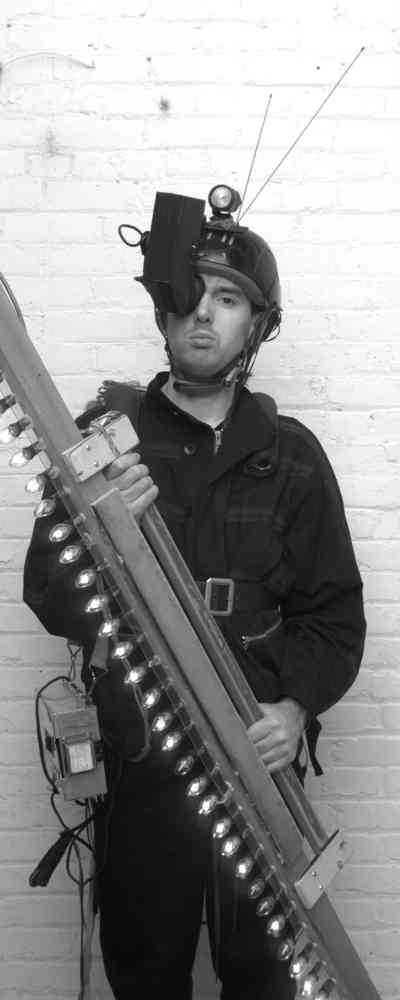


Right: Self-portrait taken with the apparatus of the invention. Left hand is covering left eye, and right hand is holding the light stick wand. A pushbutton switch on the wand is the input device, which closes the feedback loop around the system. The result is to indicate, photographically, what the subject can see, i.e. to indicate the subject's sightfield by way of bars of light, where each bar of light subtends to solid angle of the subject's sighfield, and thus "imprints" ("dusts") the subject's sightfield onto the recording film of the "dusting" (abakographic) camera, itself also controlled by the computer.
As a medium of artistic expression, Mann's "dusting" (abakographic) system allows us to see the otherwise invisible fields of sound, light, and radio waves that surround us. For example, Mann was the first to visualize radio wave propagation as a cybernetic sensory lightpainting. See Impulse Magazine, Volume 12, Number 2, 1985, and http://wearcam.org/pov.htm.

At the time, Mann was interested in circularly polarized radio waves, and their visualization through abakography (computational lightpainting), as circular polarization was a major topic at McMaster University where he was then a student.